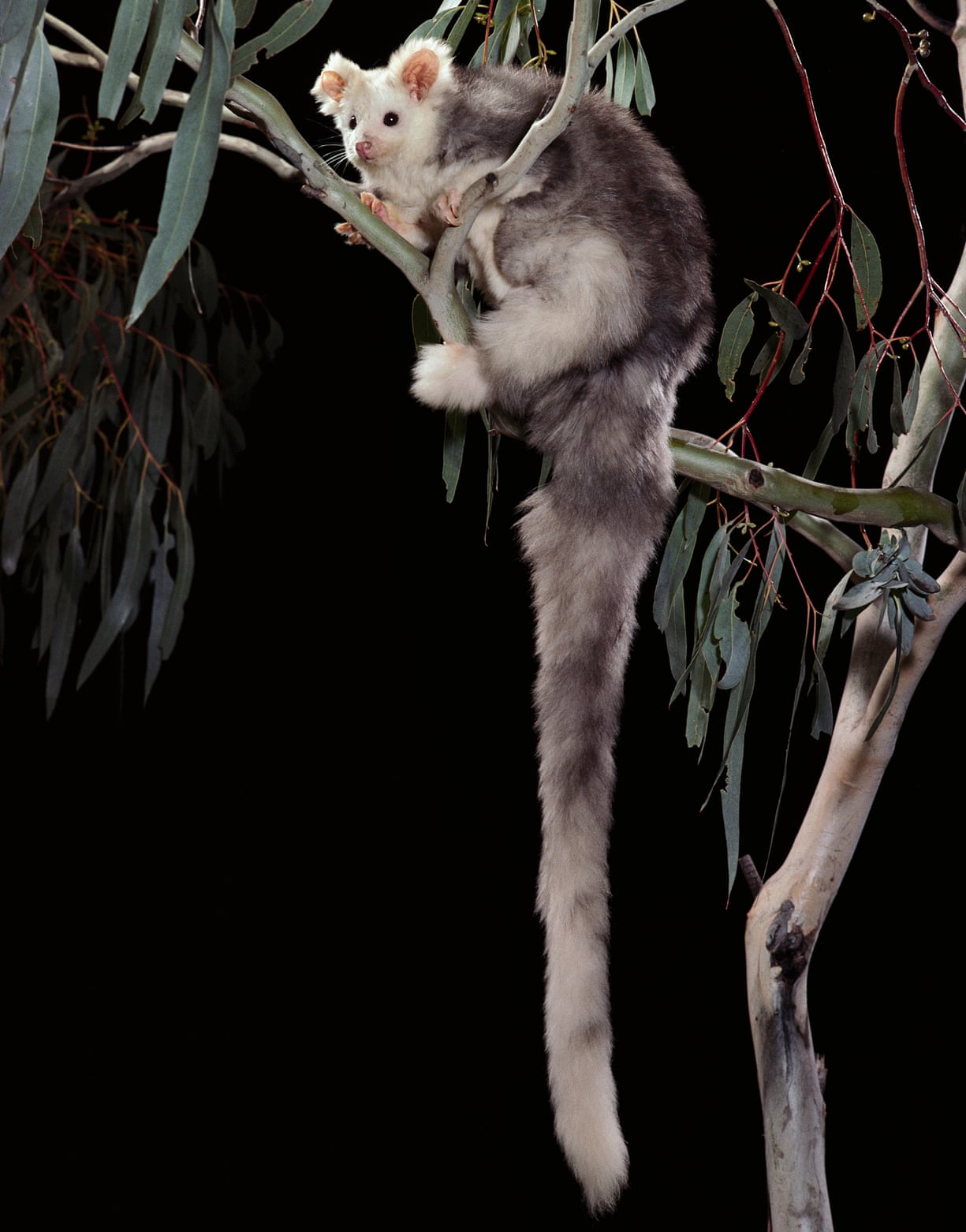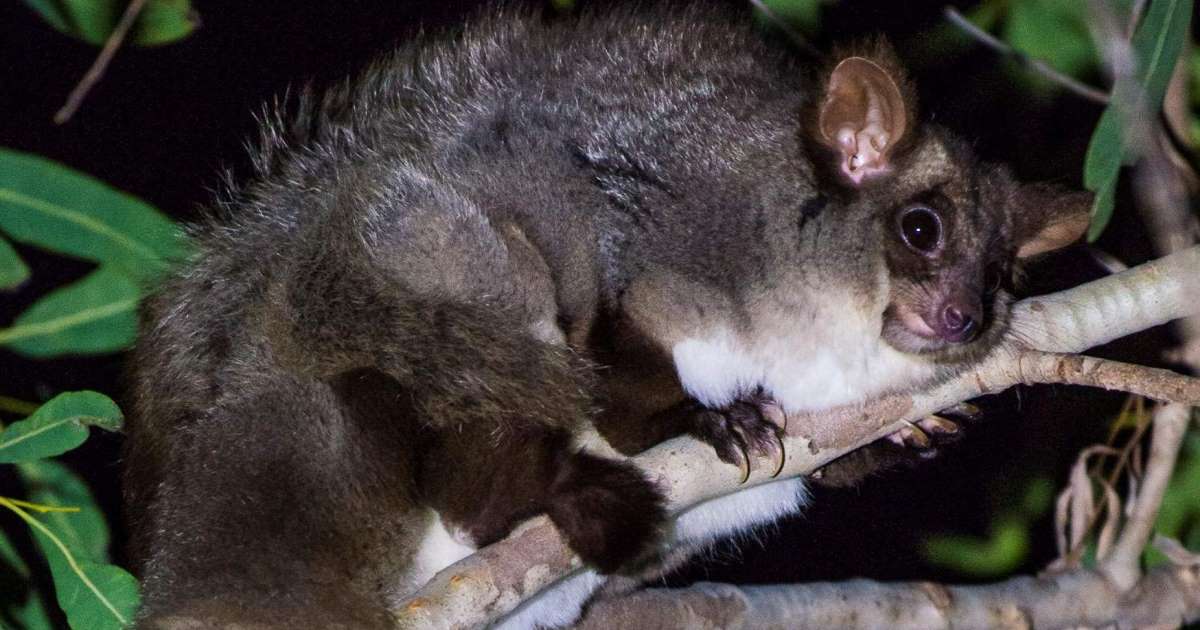The Plight of the Greater Glider: Australia’s Adorable, Flying Marsupial Hurtling Toward Extinction

(EnviroNews World News) — Victoria, Australia — When smoldering koalas grabbed headlines around the world during Australia’s unprecedented 2020 wildfires, another imperiled eucalyptus-eating species, every bit as unique and adorable, was being swallowed up by the burning beast as well: the greater glider (Petauroides volans). These nocturnal marsupials are shy and anti-social; they only breed once a year, and joeys stay with their mothers for 10 months. However, their big eyes, soft fur that can grow over two inches (six cm) in length, and notably fuzzy appearance, makes them some of the cutest animals you could ever meet — if you are ever lucky enough to spot one of these increasingly rare creatures in the wild that is.
Greater gliders, which can range in color from snow white to muddy brown to midnight black, are the largest animal in the ringtail possum family and the second largest gliding mammal in the world behind south Asia’s woolly flying squirrel (Eupetaurus cinereus). But don’t let the elegant sounding moniker and beautiful flights of fancy fool you; greater gliders have a more colloquial name that describes their physical attributes more accurately: the “clumsy possum.”
Watching the release of Gary, a clumsy possum rescued from a goanna, it’s easy to see why. Gary had a hard time latching onto the tree, and when he finally finds the right footing, he has to inchworm his way up with a series of hops. Not exactly the most graceful of actions for a creature that spends much of its time in the trees and is officially called “greater glider.”
And now for the bad news: greater glider numbers are crashing at an alarming rate. The airborne animal’s population has declined 80 percent over 20 years due to logging, bushfires, and climate change, Professor David Lindenmayer, a wildlife expert at Australian National University, told the Sydney Morning Herald. The International Union for Conservation of Nature (IUCN) lists the greater glider as “vulnerable” with only 50,000 to 500,000 mature animals remaining throughout their native habitats in western Australia
In Nov. 2019, Victoria pledged to eliminate logging by 2030 in what it described as “the largest environmental protection policy in the state’s history.” The Victorian government exempted about 240,000 acres (96,000 hectares) from logging, including greater glider habitat. By Jan. 6, 2020, according to The Age, raging fires had devastated the plan’s protected area. Despite this so-called “environmental” campaign, in April 2020, the federal and Victorian governments extended exemptions from conservation laws to the logging industry, prompting conservationists to ask just how the government plans to protect greater gliders and other sensitive animal populations decimated by Australia’s historic bushfires.
The World Wide Fund for Nature – Australia (WWF) says that the soft, fuzzy animal’s habitat has decreased 52 percent since it was listed as vulnerable in May 2016 by the Australian government. The Environment Protection and Biodiversity Conservation Act of 1999, Australia’s “central piece of environmental legislation,” should have protected that habitat, but logging exemptions and a lack of government enforcement have undermined the Act’s effectiveness.
As displayed in a story from Australia’s ABC News in Sep. 2019, the federal government authorized logging in the greater glider’s habitat in Queensland’s Meadowbank Station — a landholding used specifically for livestock production near Mt. Garnet — in spite of a report by its own environment department that doing so would likely be detrimental for the survival of the species. Neither state nor federal government conducted onsite wildlife surveys for the area before giving the go-ahead to start cutting down the forest. Nevertheless, a 2017 survey conducted by the owners spotted two greater gliders on the property.
But in Feb. 2020, those same owners of Meadowbank Station were found to have illegally cleared approximately 17 acres (seven hectares) of land. A non-profit agency investigated and reported the violations to Australia’s government, which then stepped in to require the ranchers to set aside another 17 acres for the greater glider for a total of about 280 acres (113 hectares). While this may seem like a win for the greater glider, it highlights the ineffective protections for the animals at the federal level, according to Australian Conservation Foundation policy analyst James Trezise, who told ABC News, “Organizations are going out and doing the work of government in investigating non-compliance.”
When the greater glider was listed as vulnerable, the Flora and Fauna Guarantee Act required the Australian government to create a recovery plan for the animal.
This was supposed to have been done by Prime Minister Scott Morrison’s administration by May 2019. It didn’t have anything in place by Jan. 2020 when the fires were raging, in violation of its own laws, according to the Sydney Morning Herald.
The Unique Lifestyle of the Greater Glider
Greater gliders consist of two subspecies. Petauroides volans volans may be larger than Petauroides volans minor, weighing up to 2.2 pounds (300 and 1,000 grams) more. Volans minor can be found in tropical Queensland, while volans volans is located in temperate and subtropical Victoria, NSW, and Queensland. Each animal requires between 1.7 and 7.4 acres (.7 and 3 hectares), and male territories never overlap. Preferring to live in older forests with a high density of mature trees, each specimen has between two and 18 different hollows it uses within its terrain. The night-dwellers move from tree to tree through the air, avoiding the ground where they find it more difficult to move and are more vulnerable to predation.
While most gliding marsupials have membranes that stretch from wrist to ankle, the greater glider’s membranes stretch from the elbow to ankle, which gives it a unique triangle shape as it floats through the air and more control over its flight. On those great glides, it can cruise up to about 110 yards (100 meters) and can change directions mid-flight by using its disproportionately long tail as a rudder. Like the koala, it eats eucalyptus leaves almost exclusively, though from time to time, it also eats radiata pine tree cones, mistletoe, or the phyllodes of acacia plants.
In nature, greater gliders may themselves become food for large owls, goannas, carpet pythons, and spotted tail quolls. Fires, severe weather events, and feral cats, dogs, and foxes also threaten them. However, the greatest dangers faced by the greater glider come from man: commercial and residential real estate development, logging, fire suppression, climate change and rural sprawl.

Environmentalists are concerned that unless the government takes concrete and significant action to quell the threats of fire, climate change, logging, and the destruction of the adorable animal’s habitat, many people may never have the opportunity to see these animals, either in the wild or otherwise.
RELATED NEWS FROM ENVIRONEWS
Logging Banned Across 186,000 Hectares of AU Old-Growth Forest in Victoria’s Largest-Ever Environmental Action
(EnviroNews World News) – In Victoria, Australia on Nov. 7, 2019, the government, led by Premier of Victoria Daniel Andrews, announced immediate protection for 186,000 hectares (717 square miles) of old-growth forest, and the elimination of logging activities in all old-growth forests in the country by 2030. The announcement…
Koala Population Demolished, Thousands Killed Tragically in Sweeping Climate Fires, Imperiled Citizens Try Frantically to Help
(EnviroNews World News) – As bush fires rip through the Mid-North Coast region of Australia’s New South Wales (NSW), koalas (Phascolarctos cinereus) are being incinerated at an alarming rate. High winds and temperatures have hampered firefighting efforts. Australian Federal Environment Minister Sussan Ley fears 30 percent of the area’s…
Heroic Video: Koala Rescue: Teens Race Around Kangaroo Island, Piling Imperiled, Smoldering Koalas into Car
(EnviroNews World News) – Kangaroo Island, Australia – “We’re just trying to collect as many live ones as we can. This is our little koala rescue,” said one teenage boy from off-camera in a video that is now going viral across the Internet. Published on Alternative 666, the clip…
FILM AND ARTICLE CREDITS
- Shad Engkilterra - Journalist, Author




![Leading the Charge for America’s Wild Horses on Capitol Hill: NBA/NFL Celeb. Bonnie-Jill Laflin: ‘[Politics] won’t stop us from fighting’](https://cf-images.us-east-1.prod.boltdns.net/v1/static/1927032138001/f46b2158-cead-47f0-ab44-4b027059411a/4e4afcf2-937d-4a9d-acba-1b82e2efd4c6/160x90/match/image.jpg)


